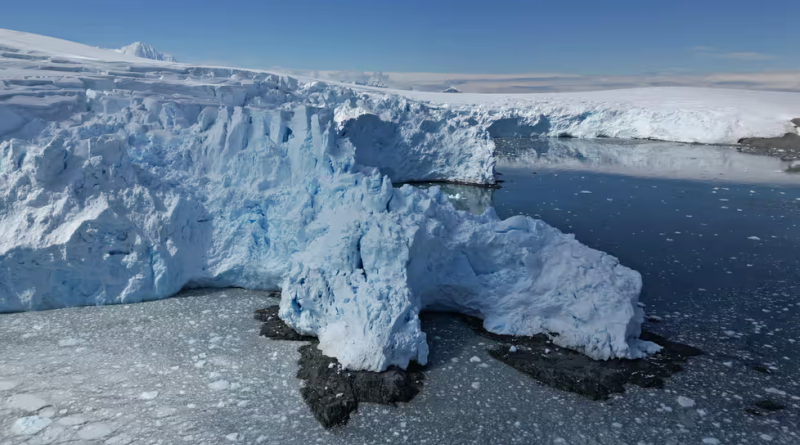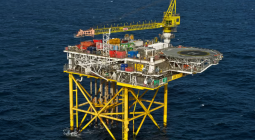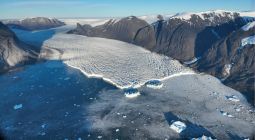‘Two incredible extreme events’: Antarctic sea ice on cusp of record winter low for second year running

Dr Will Hobbs, a sea ice researcher at the University of Tasmania, said it could take decades for the Antarctic ecosystem to recover from an event like last year. Photograph: Juan Barreto/AFP/Getty Images
Sea ice surrounding Antarctica is on the cusp of reaching a record winter low for a second year running, continuing an “outrageous” fall in the amount of Southern Ocean that is freezing over.
The Antarctic region underwent an abrupt transformation in 2023 as the sea ice cover surrounding the continent crashed for six months straight. In winter, it covered about 1.6m sq km less than the long-term average – an area roughly the size of Britain, France, Germany and Spain combined.
Scientists at the Australian Antarctic Program Partnership said the latest data showed this had been repeated in 2024. On 7 September the amount of frozen ocean was less than on the same date last year.
While the winter record is not yet complete, and it is therefore not clear if the extent of sea ice for the season will be less than last year, the scientists said it was part of a body of evidence that the Antarctic system had moved to a “new state”.
“What we’re really talking about are two incredible extreme events,” said Dr Will Hobbs, a sea ice researcher at the University of Tasmania. “Last year was outrageous and it’s happened again.”
Hobbs said at monthly and yearly timescales the atmosphere was the main driver of regional variability. “What’s different now is that warmer Southern Ocean temperatures are really having an impact on the sea ice,” he said. “We know that the past two years have been the warmest on record for the planet, with global temperatures more than 1.5C above pre-industrial for extended periods. This global warmth is now reflected in the oceans around the Antarctic.”
On Saturday, Southern Ocean sea ice covered 17m sq km, less than the previous low of 17.1m sq km last year. The long-term average for 7 September based on satellite data is 18.4m sq km.
The Antarctic winter typically starts in March and lasts until October. Dr Phil Reid, from the Australian Bureau of Meteorology, said it was too early to definitively say whether the winter sea ice had reached its annual maximum level, but it was startling it had dropped so far below average in consecutive years.
He said while scientists were just starting to understand the impact low sea ice levels had on the weather and climate, recent studies had suggested it contributed to an increase in summertime rain events and dry winter days in Australia. “Ocean and atmosphere interactions induced by Antarctic sea ice loss are thought to drive these changes,” Reid said.
Hobbs said it could take decades for Antarctic sea ice to recover from last year’s event and by then the long-term impact of global heating would be clear. “There’s more and more evidence that [the long-term average of sea ice cover] isn’t likely to return,” he said.
While sea ice loss does not directly change global sea levels, scientists say it has a potentially big indirect impact, particularly in summer. It removes a protective barrier slowing the loss of glacial ice from the continent and plays a role in accelerating ocean warming as the exposed dark waters absorb more heat from the atmosphere.
Scientists from the British Antarctic Survey found that a then record drop in Antarctic sea ice in late 2022 could have led to the death of thousands of emperor penguin chicks.
A study published in Nature last year found meltwater from the continent’s ice sheets could dramatically slow down the Southern Ocean overturning circulation – a deep ocean current – by 2050 if greenhouse gas emissions continued at their current level. A subsequent paper estimated the circulation, which influences global weather patterns and ocean temperatures and nutrient levels, had already slowed by about 30% since the 1990s.





